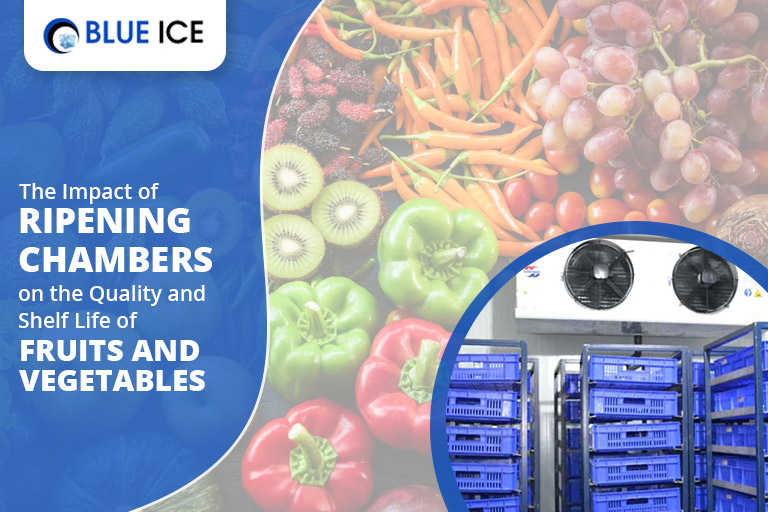
Cold Storage Company

Cold Storage Company

The last stage of fruit and vegetable development, ripening, causes a variety of physicochemical and nutritional changes in them. This affects their taste, texture and appearance. The supply chain of the ripe fruits and vegetables is extensive and takes time. They sometimes become over-ripe and un-edible when they reach the market. To ensure that the fruits and vegetables reach the customers as they ripen, they are kept in especial ripening chambers.These chambers have controlled temperature and environment as per the requirement of the fruits and vegetables.
The ripening chambers are equipped with different equipment. They contain:
● Cooling system to maintain the temperature
● Humidifiers to control humidity as an excess of it or any reduction can have a negative impact on the stored food.
● Fans and ventilators to ensure necessary supply of air and ventilation
● Controlling system to control carbon dioxide, nitrogen, and ethylene.
Along with this equipment, there are different types of sensors to keep a check on different parameters including CO2, temperature, and humidity. These sensors need to be reliable as their accuracy has a direct impact on the ripening process. They need to be resistant to dew, soiling and any kind of soil contamination. All the sensors are mostly easy to maintain and are enclosed in a high protection class to protect them from being tampered by surrounding atmosphere.
The fruits and vegetables are stored in ripening chambers to get an ideal degree of ripeness when they reach on shelf. They are stored in transport boxes and shelves. The humidity, temperature, CO2 supply, and ethylene supply is adjusted and controlled to slow down or accelerate the ripening process of the fruits and vegetables. Different fruits and vegetables take different time to become ripe. They can be stored accordingly. For instance, bananas are kept for 4-8 days in ripening chambers in a temperature between 14 degrees Celsius and 23 degrees Celsius. Ripening chambers extend the shelf life of fruits and vegetables, benefiting the farmers and sellers. The ripening period is often decided by the change in color, texture, and firmness of the fruit and vegetables. Similarly, fruits and vegetables are visually examined alternate days or every few days to determine their shelf life.
Different component and methods are used in ripening chambers for different fruits and vegetables. In many countries, Ethephon is used for fruit ripening. It penetrates in the fruit and then releases ethylene. Ethylene Glycol is used in colder climates as the fruit ripening agent. The ripening agent has to be chosen carefully as many chemicals lead to health hazards.
Conclusion
Ripening chambers are used to slow down or accelerate the ripening process of fruits and vegetables to satisfy their market demand. The concentration of ripening agents should be controlled to keep a check on the toxic impact of these chemicals. In controlled environment, the ripened fruits and vegetables are safe to eat.
Queries
Ripening chambers can have a significant impact on the quality of fruits and vegetables. By controlling the environment, ripening chambers can help ensure that produce ripens evenly, resulting in better color, flavor, and texture. Additionally, ripening chambers can help prevent the growth of mold and bacteria, which can cause produce to spoil prematurely.
Many types of fruits and vegetables can benefit from ripening chambers, including bananas, avocados, tomatoes, and apples. Generally, any fruit or vegetable that undergoes a ripening process after being harvested can benefit from controlled ripening conditions.
Yes, ripening chambers can help extend the shelf life of fruits and vegetables. By controlling the ripening process, ripening chambers can help ensure that produce ripens at a consistent rate, reducing the risk of spoilage and extending the shelf life.